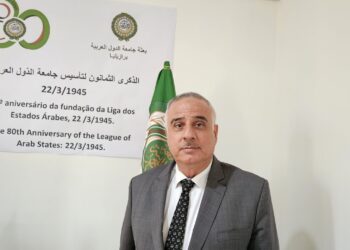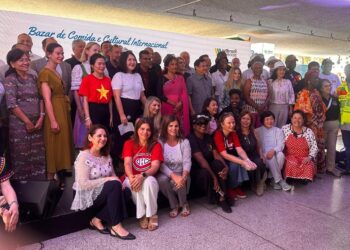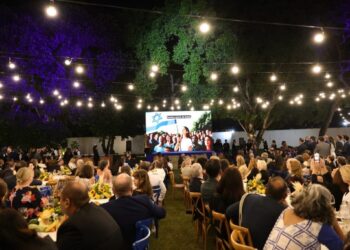[:pb]
In celebration of the National Day of Serbia was opened on Tuesday (16), in the foyer of the plenary of the Legislative Chamber, the show “Itinerarium Romanum Serbiae Viminacium” or “The route of the Roman emperors.” The exhibition features photos and replica busts of 18 emperors Roman born in what is now the current Serbia, as well as maps of the itinerary of the land that was the Roman Empire to the Danube River. The exhibition organized by the Embassy of Serbia was opened by Ambassador Veljko Lazic and the President of the Legislative Chamber, Ms Celina Leão.
 “This is a quite renowned show, I hope that after visiting it, people want to go to Serbia,” said the ambassador Lazic. In his view, the date of independence of the country, February 15, has two things to celebrate; “Serbia uprising in 1804 and the first constitution of modern Serbia in 1835, considered the first democratic letter magna of Europe.” To Lazic, the exhibition is “a trip to the Roman past that still beats in the territory of modern Serbia; there are replicas of busts of emperors, all related to a 600 km route that covers six important historical cities of Serbia founded at the time of the Roman Empire”, said the diplomat.
“This is a quite renowned show, I hope that after visiting it, people want to go to Serbia,” said the ambassador Lazic. In his view, the date of independence of the country, February 15, has two things to celebrate; “Serbia uprising in 1804 and the first constitution of modern Serbia in 1835, considered the first democratic letter magna of Europe.” To Lazic, the exhibition is “a trip to the Roman past that still beats in the territory of modern Serbia; there are replicas of busts of emperors, all related to a 600 km route that covers six important historical cities of Serbia founded at the time of the Roman Empire”, said the diplomat.
 Congresswoman Celina Leão appreciates Veljko Lazic ambassador’s rich cultural contribution to Brasília and public school students who may have access to stories of the Roman emperors, that in her view is largely the history of the world. “How to tell the story of humanity without telling the story of Rome?” asked Celina.
Congresswoman Celina Leão appreciates Veljko Lazic ambassador’s rich cultural contribution to Brasília and public school students who may have access to stories of the Roman emperors, that in her view is largely the history of the world. “How to tell the story of humanity without telling the story of Rome?” asked Celina.
Besides diplomats, congressmen and others guests, the archaeologist Miomir Korac Serbian also honored the opening of the exhibition. The exhibition “Itinerarium Romanum Serbiae Viminacium” has been viewed during ExpoMilão 2013 in Italy, Uruguay and also in the Casa de la Cultura in Buenos Aires, Argentina. The exhibition is open until March 15th and can be visited from 8 am to 6 pm (except weekends and holidays). Entry is free.
History – A prominent Roman emperor born in what is now Serbia, in the present city of Nis, Constantine I (272-337), who ended the persecution of Christians in 313, making the imperial religion the official faith. In 313, Constantine issued the Edict of Milan, which recognized the freedom of the Christian religion. According to the historian Aleksandar Jovanovic, in the turbulent centuries that preceded the final collapse of the Western Roman Empire in the late fifth century, of 90 emperors 18 had its origin in Serbian territory.
“As the throne was not hereditary but a selection that related with the courage and the charisma of the soldiers, the military leaders of success could be elected. These Serbs emperors were also guardians of the Empire’s borders and many of them died in battle, fighting along his men”, said Jovanovic.
These monarchs, according to the historian, to remain in border towns where they were born, built splendid palaces, temples, theaters, thermal baths, markets, public spaces and important military camps of the imperial legions, whose ruins show the intelligence of design.
The archaeological site of Viminacium, the confluence of the rivers Sava and Danube, 70 km east of Belgrade, was the model chosen for the development of the Roman road runs on the territory of Serbia. Viminacium, the capital of the Roman province of Moesia Superior, in their best times had about 30,000 inhabitants and was one of the few places in the Roman Empire where it were minted coins.
Exposição celebra Exposição celebra independência Sérvia
Em comemoração a data nacional da Sérvia foi aberta, nessa terça-feira (16), no foyer do plenário da Câmara Legislativa, a mostra “Itinerarium Romanum Serbiae Viminacium” ou “A rota dos imperadores romanos”. A exposição reúne fotos e réplicas de bustos de 18 imperadores romanos nascidos onde hoje é a atual Sérvia, além de mapas do itinerário daquela terra que foi do império romano até às margens do Rio Danúbio. A mostra organizada pela embaixada da Sérvia foi aberta pelo embaixador Veljko Lazic e pela presidente da Câmara Legislativa, deputada Celina Leão.
 “Essa é uma mostra bastante renomada, espero que depois de visitá-la, as pessoas queiram ir à Sérvia”, disse o embaixador Lazic. A seu ver, a data da independência daquele país, 15 de fevereiro, tem duas coisas a comemorar; “a insurreição Sérvia em 1804 e a primeira constituição da Sérvia moderna em 1835, considerada a primeira carta-magna democrática da Europa”. Para Lazic, a mostra é “uma viagem ao passado romano que ainda palpita no território da atual Sérvia; são réplicas de bustos de imperadores, todos relacionados a uma rota de 600 quilômetros que abrange seis importantes cidades históricas da Sérvia fundadas na época do império romano”, explicou o diplomata.
“Essa é uma mostra bastante renomada, espero que depois de visitá-la, as pessoas queiram ir à Sérvia”, disse o embaixador Lazic. A seu ver, a data da independência daquele país, 15 de fevereiro, tem duas coisas a comemorar; “a insurreição Sérvia em 1804 e a primeira constituição da Sérvia moderna em 1835, considerada a primeira carta-magna democrática da Europa”. Para Lazic, a mostra é “uma viagem ao passado romano que ainda palpita no território da atual Sérvia; são réplicas de bustos de imperadores, todos relacionados a uma rota de 600 quilômetros que abrange seis importantes cidades históricas da Sérvia fundadas na época do império romano”, explicou o diplomata.
 A deputada Celina Leão agradeceu ao embaixador Veljko Lazic a rica contribuição cultural para Brasília e o acesso que alunos das escolas públicas poderão ter a histórias dos imperadores romanos que a seu ver é grande parte da história do mundo. “Como contar a história da humanidade sem contar a história de Roma?”, perguntou Celina.
A deputada Celina Leão agradeceu ao embaixador Veljko Lazic a rica contribuição cultural para Brasília e o acesso que alunos das escolas públicas poderão ter a histórias dos imperadores romanos que a seu ver é grande parte da história do mundo. “Como contar a história da humanidade sem contar a história de Roma?”, perguntou Celina.
Além de diplomatas, deputados e convidados, o arqueólogo sérvio Miomir Korac também prestigiou a abertura da mostra. A exposição “Itinerarium Romanum Serbiae Viminacium” já foi vista durante a ExpoMilão 2013, na Itália; no Uruguai e também na Casa de la cultura, em Buenos Aires, Argentina. A exposição fica aberta ao público até 15 de março e poderá ser visitada das 8h às 18h (exceto em finais de semana e feriados). A entrada é gratuita.
História – Um dos imperadores romanos proeminentes nascidos onde hoje é hoje a Sérvia, na atual cidade de Nis, foi Constantino I (272-337), que terminou a perseguição de cristãos em 313 fazendo que a fé religiosa oficial imperial. Em 313, Constantino emitiu o Édito de Milão, o qual reconheceu a liberdade da religião cristã. De acordo com o historiador Aleksandar Jovanovic, nos séculos turbulentos que antecederam o colapso final do Império Romano do Ocidente, no final do século V, dos 90 imperadores, 18 tinham sua origem em território sérvio.
“Como o trono não era hereditário, mas uma seleção relacionada com a coragem e o carisma dos soldados, os líderes militares de sucesso poderiam ser eleitos. Estes imperadores sérvios também foram guardiões das fronteiras do Império e muitos deles morreram em batalhas, lutando lado a lado com os seus soldados”, explica Jovanovic.
Esses monarcas, segundo o historiador, para permanecerem nas cidades fronteiriças onde nasceram, construíram palácios esplendorosos, templos, teatros, banhos termais, mercados e espaços públicos, além de campos militares importantes das legiões imperiais, cujas ruínas mostram a inteligência do design.
O sítio arqueológico de Viminacium, na confluência dos rios Mlava e Danúbio, 70 quilômetros ao leste de Belgrado, foi o modelo escolhido para o desenvolvimento da roda de estradas romanas no território da Sérvia. Viminacium, a capital da antiga província romana de Mésia Superior, em seus melhores tempos tinha aproximadamente 30 mil habitantes e foi um dos poucos lugares do Império Romano onde eram cunhadas moedas.
[:]












